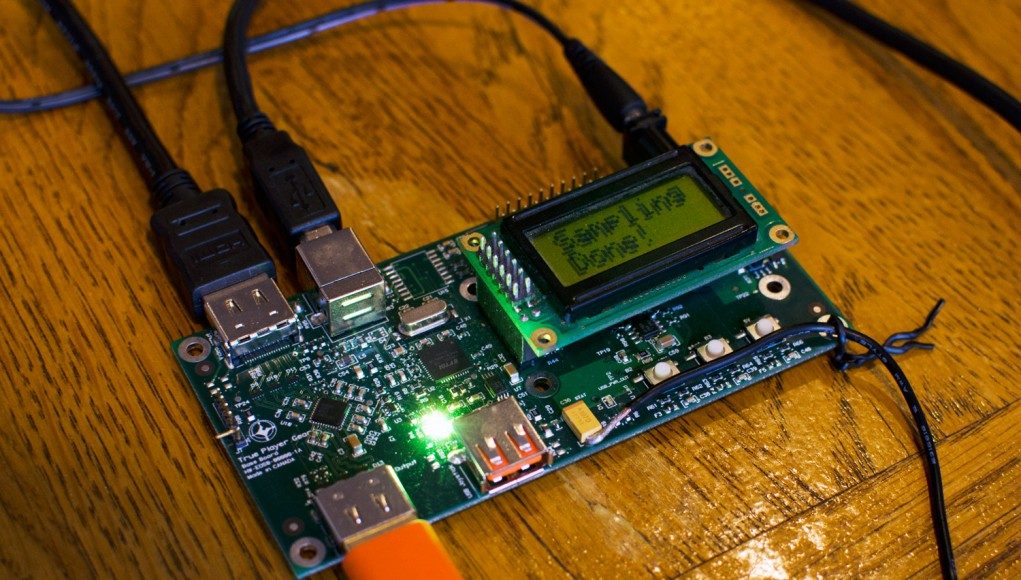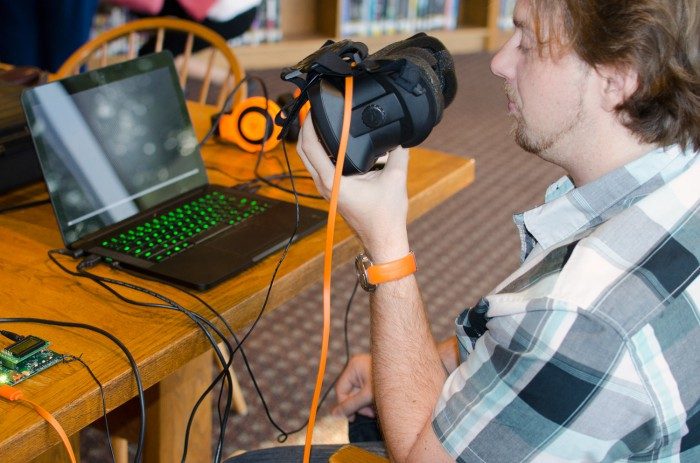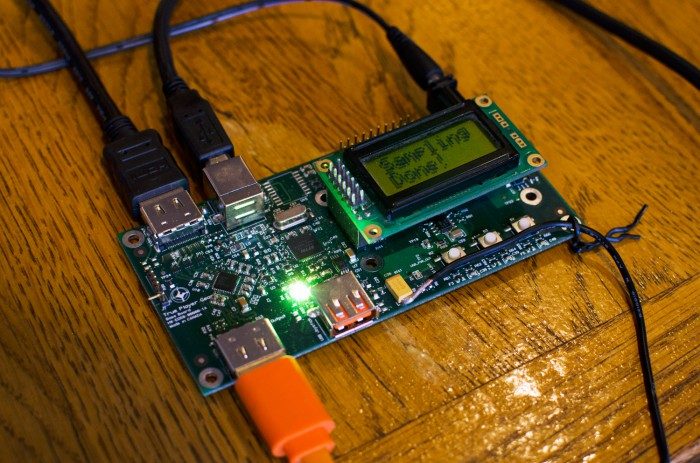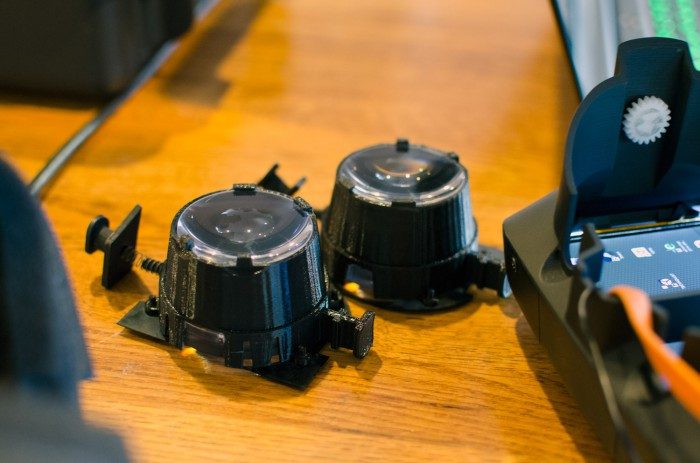After the first day of Vrvana’s Kickstarter campaign for the Totem VR headset the company has raised more than $100,000 CAD toward their $350,000 goal. I recently spoke with Vrvana CEO Bert Nepveu to learn more about the Totem headset, including details on the planned hardware acceleration that’s designed to increase VR rendering performance.
Vrvana launched their Totem VR headset Kickstarter yesterday afternoon and have had a strong opening thus far, now nearly one-third of the way to their $350,000 CAD goal at $105,000.
The company is raising funds to create a developer kit of the Totem headset which is promised to have a number of unique features when compared to other consumer-level headsets that we’ve seen thus far: a stereo-pair of front-facing cameras for 3D passthrough video and inside-out positional tracking, dual on-headset headphone plugs, per-eye lens focus, and hardware acceleration.
‘Hardware acceleration’ is a rather nebulous term; in a detailed interview with Vrvana CEO Bert Nepveu, I learned more about the headset and how it would use on-board computing with the hopes of improving VR performance.
See Also: Totem VR Headset Kickstarter is Live, In-depth Interview with Vrvana CEO Bert Nepveu
Nepveu told me that the Totem does pre-distortion on the headset itself rather than the host computer.
“It takes a lot of horsepower to do the pre-lens distortion… so that will really offload your computer so you don’t need a Titan to play in VR [jokingly]. So you’ll save money on your graphics card; it will cost a little bit more for the Totem but we think we have lots of added value that people will enjoy,” he said.
Because the Totem and other VR headsets use lenses to allow users’ to focus on a screen that’s just inches from their eyes, the image seen on the screen is inevitably distorted by the lenses. To compensate for this distortion, frames coming from the host computer are inversely pre-distorted so that, when seen through the lenses, the image appears normal—it’s akin to the way that noise canceling headphones cancel outside noise by creating an inverse sound wave to counter incoming sounds.
In the Oculus Rift and similar headsets seen to date, pre-distortion is the job of the host computer. Totem, on the other hand, relieves the host computer from having to process pre-distortion by accepting undistorted side-by-side frames and handling distortion through hardware built into the headset. The goal is to free up computing resources for fasting rendering, allowing the host computer to process frames more quickly and (hopefully) reduce latency.
“I don’t want to get too [laughs] specific because you know we have to do extensive testing, but my partner had a really basic laptop and I remember it was in Tuscany [VR demo]… it was barely making I think 45 frames per second and then [after disabling pre-distortion]… it went up to I think 75 [frames per second] so it’s like a 50% difference,” Nepveu said. “So I guess it will depend on your GPU and things like that, but I see for certain applications where maybe you’re on a laptop and you want to show something about architecture and you have a Mac which has not a really great graphics card but you still want to give a good experience, that’s where the Totem will really be beneficial because it will offload your laptop.”
Nepveu also told me that chromatic aberration correction—adjusting color channels of the image to compensate for light of difference frequencies passing through the lenses slightly differently—would also be handled on the headset itself.
“Since we design our own optics, we know exactly the distortion they do… it’s different per color because the light travels at a different speed depending on the colors so we can adapt to that in the headset…”
We’ll keep our eyes on the Totem Kickstarter and continue to watch as Vrvana makes progress with this interesting VR headset.










